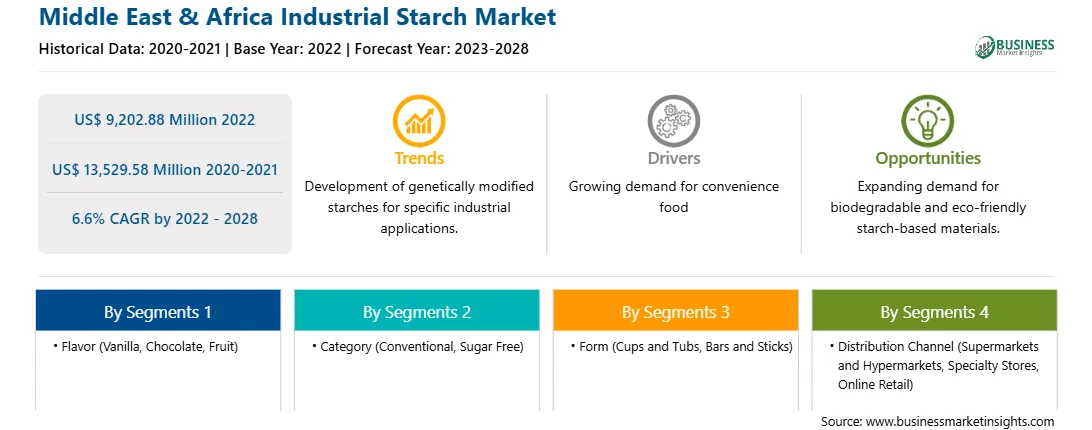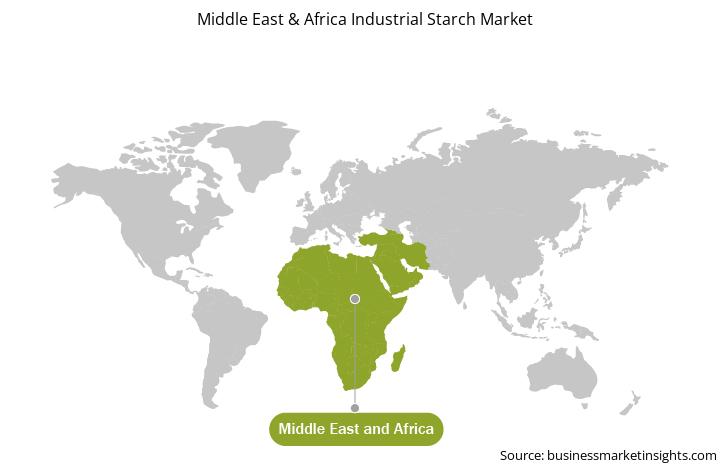There is a strong demand for products with organic, clean-label, and plant-based ingredients owing to rising health and wellness concerns. Manufacturers of starch and its derivatives are significantly investing in innovations to cater to the evolving needs of consumers. This clean-label product provides instant viscosity, thereby enabling optimal control of rheological behavior in cake mixes, sauces, or other semiliquid formulations. It can also be used to prepare high-quality savory products, pastries, and fruit-based fillings to provide a premium look and texture. In November 2020, BENEO GmbH launched precooked functional native rice starch under the name Remypure S52 P. The product is stable in acidic and shear conditions, and it allows food manufacturers to develop clean-label food preparations such as cold-pressed sauces, salad dressings, dairy products, frozen desserts, and bakery fillings. It imparts a soft and creamy texture to final products. Moreover, these starch varieties are free of genetically modified organisms (GMOs). Thus, the rising product innovation by key players in the industrial starch market is projected to boost the market growth in the MEA during the forecast period.
Vendors in the industrial starch market can attract new customers and expand their footprints in emerging markets by offering products with new features and technologies. This factor is likely to drive the MEA industrial starch market at a good CAGR during the forecast period.
Strategic insights for the Middle East & Africa Industrial Starch provides data-driven analysis of the industry landscape, including current trends, key players, and regional nuances. These insights offer actionable recommendations, enabling readers to differentiate themselves from competitors by identifying untapped segments or developing unique value propositions. Leveraging data analytics, these insights help industry players anticipate the market shifts, whether investors, manufacturers, or other stakeholders. A future-oriented perspective is essential, helping stakeholders anticipate market shifts and position themselves for long-term success in this dynamic region. Ultimately, effective strategic insights empower readers to make informed decisions that drive profitability and achieve their business objectives within the market.

| Report Attribute | Details |
|---|---|
| Market size in 2022 | US$ 9,202.88 Million |
| Market Size by 2028 | US$ 13,529.58 Million |
| Global CAGR (2022 - 2028) | 6.6% |
| Historical Data | 2020-2021 |
| Forecast period | 2023-2028 |
| Segments Covered |
By Flavor
|
| Regions and Countries Covered | Middle East and Africa
|
| Market leaders and key company profiles |
The geographic scope of the Middle East & Africa Industrial Starch refers to the specific areas in which a business operates and competes. Understanding local distinctions, such as diverse consumer preferences (e.g., demand for specific plug types or battery backup durations), varying economic conditions, and regulatory environments, is crucial for tailoring strategies to specific markets. Businesses can expand their reach by identifying underserved areas or adapting their offerings to meet local demands. A clear market focus allows for more effective resource allocation, targeted marketing campaigns, and better positioning against local competitors, ultimately driving growth in those targeted areas.

The MEA industrial starch market is segmented on the type, source, application, and country. Based on type, the market is segmented into native starch and starch derivatives and sweeteners. The starch derivatives and sweeteners segment dominated the market in 2022 and is expected to register the highest CAGR during forecast period. Based on source, the market is segmented into potato, corn, wheat, cassava, and others. The wheat segment dominated the market in 2022 and corn segment is expected to register the highest CAGR during the forecast period. Based on application, the MEA industrial starch market is segmented into food and beverages, pulp and paper, animal feed, pharmaceuticals, and others. The food and beverages segment dominated the market in 2022, and pulp and paper segment is expected to register the highest CAGR during the forecast period. Based on country, the MEA industrial starch market is segmented into South Africa, Saudi Arabia, the UAE, and the Rest of MEA.
ADM; AGRANA Beteiligungs AG; Cargill, Incorporated; Grain Processing Corporation; Ingredion Incorporated; Roquette Frères; Tate & Lyle PLC; and Tereos Group are among the leading companies operating in the MEA industrial starch market.
The Middle East & Africa Industrial Starch Market is valued at US$ 9,202.88 Million in 2022, it is projected to reach US$ 13,529.58 Million by 2028.
As per our report Middle East & Africa Industrial Starch Market, the market size is valued at US$ 9,202.88 Million in 2022, projecting it to reach US$ 13,529.58 Million by 2028. This translates to a CAGR of approximately 6.6% during the forecast period.
The Middle East & Africa Industrial Starch Market report typically cover these key segments-
The historic period, base year, and forecast period can vary slightly depending on the specific market research report. However, for the Middle East & Africa Industrial Starch Market report:
The Middle East & Africa Industrial Starch Market is populated by several key players, each contributing to its growth and innovation. Some of the major players include:
The Middle East & Africa Industrial Starch Market report is valuable for diverse stakeholders, including:
Essentially, anyone involved in or considering involvement in the Middle East & Africa Industrial Starch Market value chain can benefit from the information contained in a comprehensive market report.